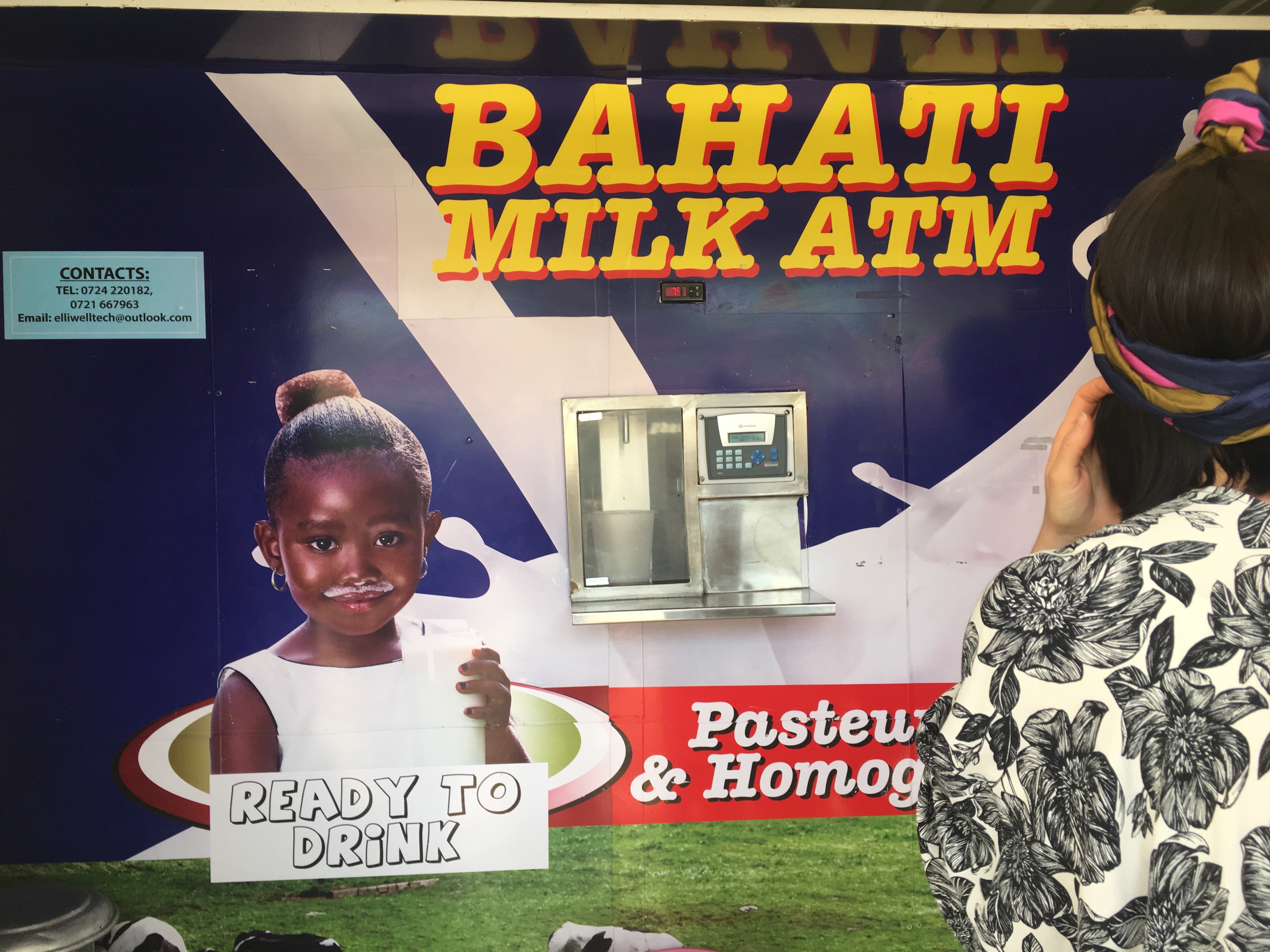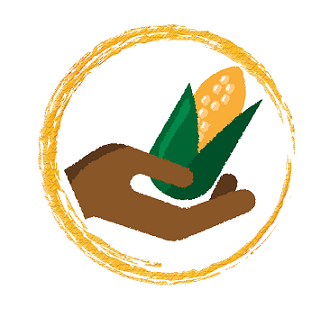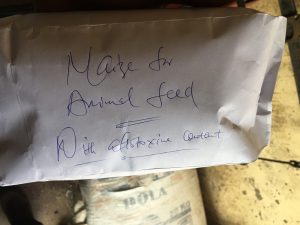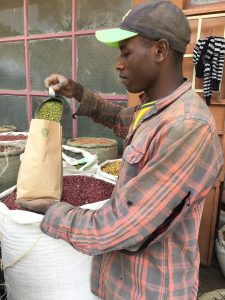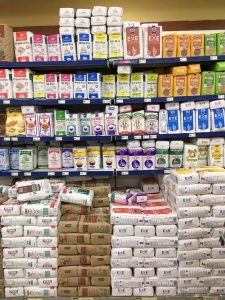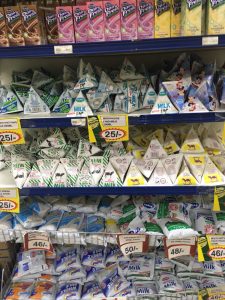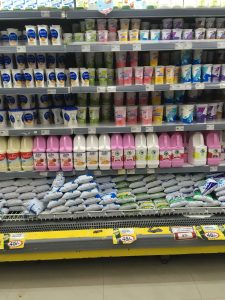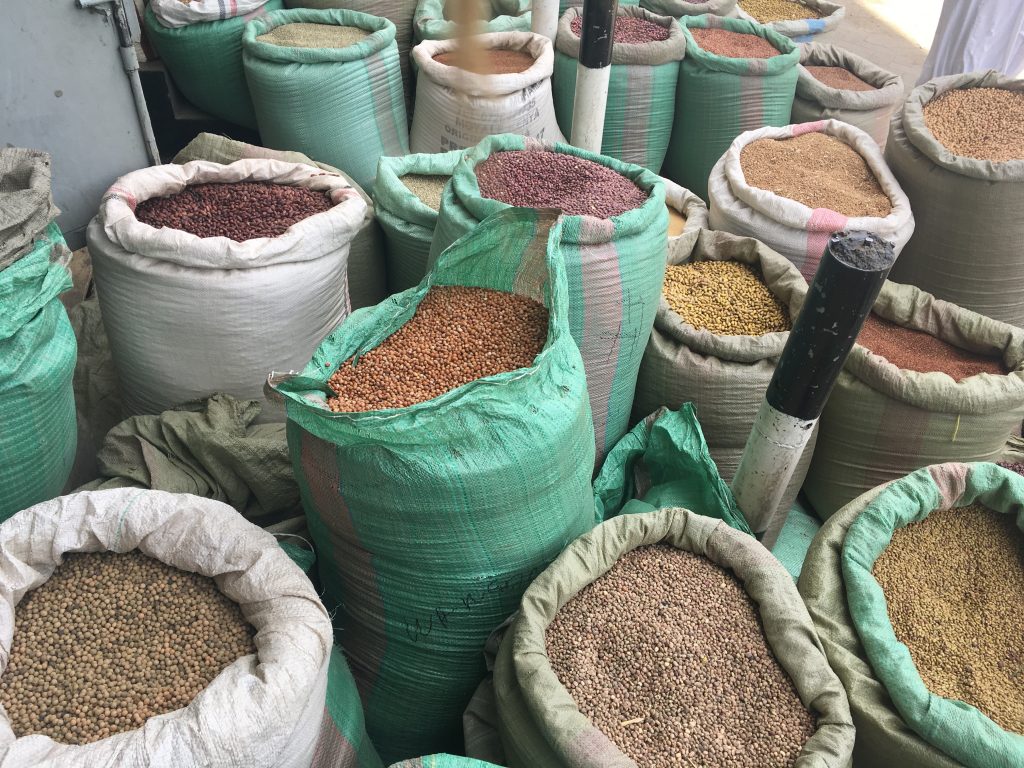
Aware of the difference of local market place for consumer goods, we spent two days to observe local markets from official to unofficial ones and examine local consumer behaviours in buying maize and diary products. We visited wholesales stores, retail stores, supermarkets and a milk ATM.
Aflatoxin issue becomes more severe for the countryside where the unofficial market is the most popular channel for consumers to buy maize and milk products. When we visited wholesales stores in Nakuru town, we realised that people a very well aware of Aflatoxin contamination in maize but not in milk. The store owner helped us understand more of the situation when she classified her products in three types of contaminated maize, with different pricing and purposes for intended use. Aflatoxin contaminated in maize is normal and sold openly and people accept that as a feed for animals.
We then visited some retailers in town to see the variety of maize and milk products and to learn about consumer behaviours. We realised that there is no communication about the Aflatoxin issue and that none of the product labels help consumers find safe products in stores.

Even in the supermarkets what we consider an official market place, it’s very difficult to find a labeled Aflatoxin safe product. We only found the brand Bio, that mentions anything about Aflatoxin control in its production process.
We also found a milk ATM in Nakuru, where consumers can easily buy milk and dairy products into their own bottles. We talked with the owner and the staff to know how they control the quality and storage of milk at the place and they told us that it’s the same owners and processes that are used in all milk ATM’s they operate. So they have their own farms where they produce the milk and then sell it at the ATM.
